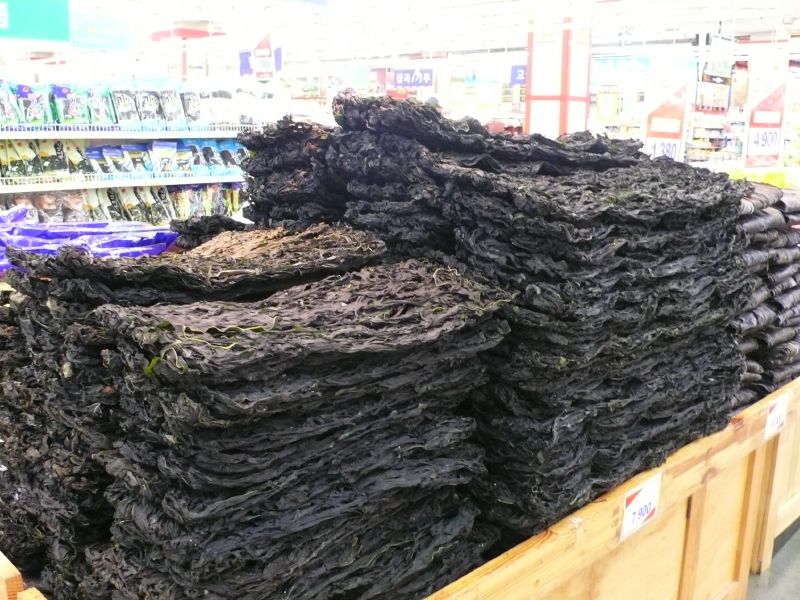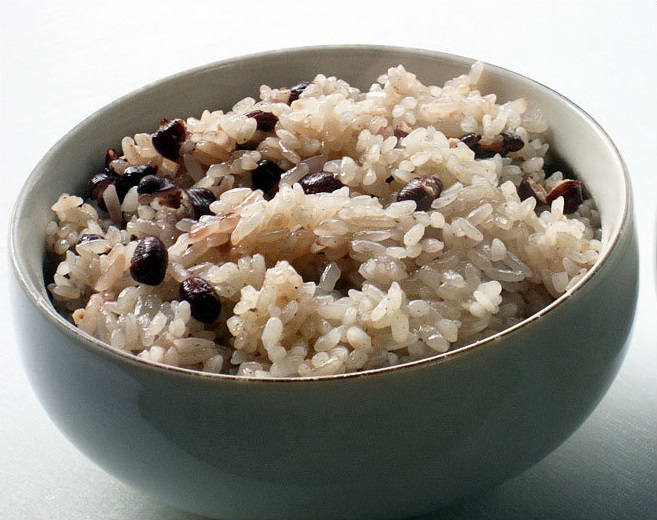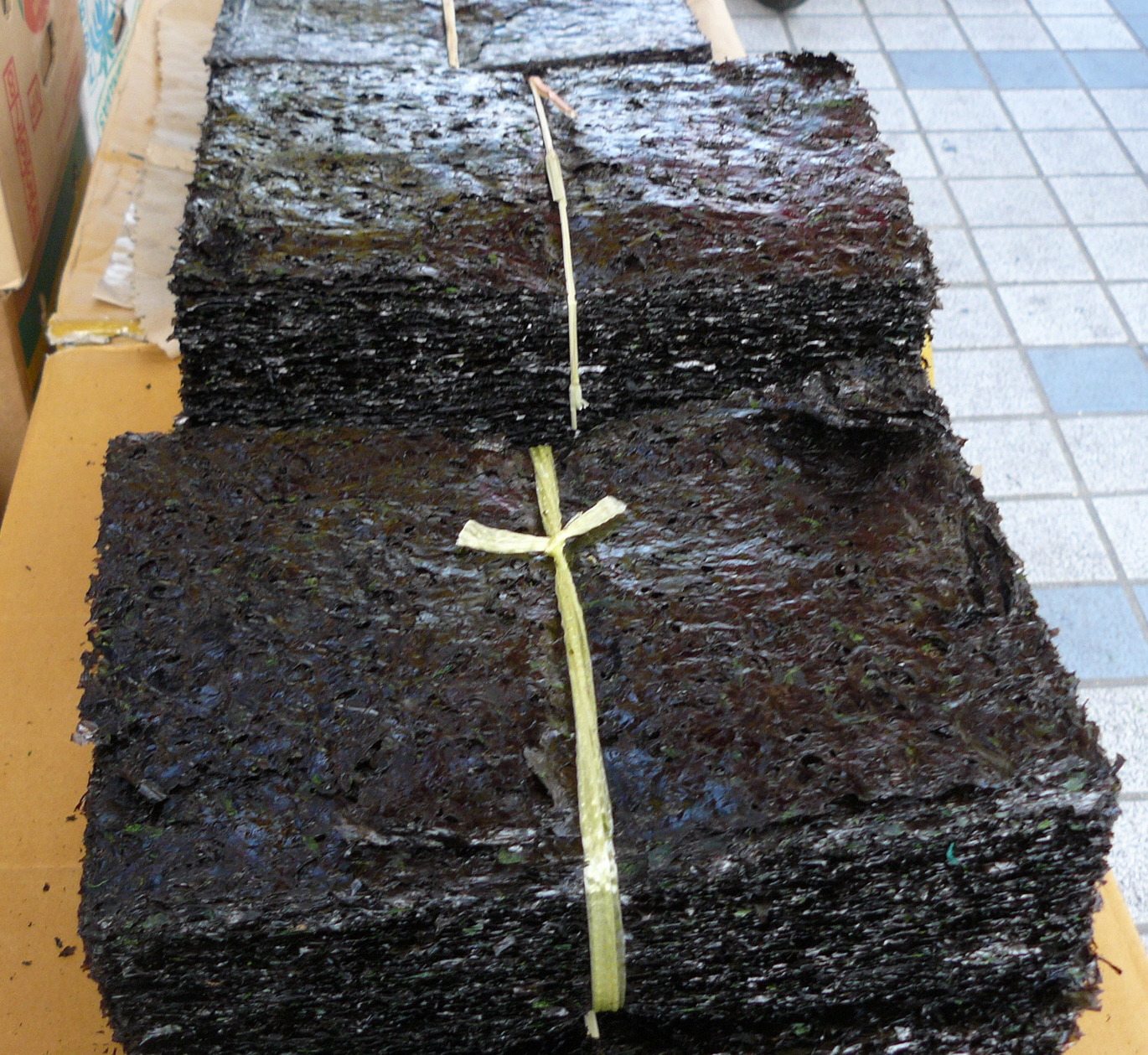|
Naengguk
''Naengguk'' * () or chilled soup refers to all kinds of cold '' guk'' (, soups) in Korean cuisine, mainly eaten in summer. It is also called ''chan'guk'' (), which literally means "cold soup" in pure Korean, while the term ''naengguk'' is a combination of a hanja word (, "cold") and a pure Korean word (, "soup"). The first historical record on ''naengguk'' appears in a poem written by Yi Kyu-bo (1168–1241), a high officer of the Goryeo period (918–1392). In the poem, ''naengguk'' is referred to as ''sungaeng'' (), which literally means ''sunchaeguk'' (), i.e., soup made with ''sunchae'' ('' Brasenia schreberi''). Yi praised its clear and plain taste, saying it made usual dishes seem vulgar. ''Naengguk'' is largely divided into two categories according to seasoning and ingredients. The first category is made by mixing chilled water and vinegar to give a sour and sweet taste, such as ''miyeok naengguk'' () made with wakame, ''oi naengguk'' () made with cucumber, ''pa naengg ... [...More Info...] [...Related Items...] OR: [Wikipedia] [Google] [Baidu] |
Wakame
Wakame ''(Undaria pinnatifida)'' is a species of kelp native to cold, temperate coasts of the northwest Pacific Ocean. As an edible seaweed, it has a subtly sweet, but distinctive and strong flavour and satiny texture. It is most often served in soups and salads. Wakame has long been collected for food in East Asia, and sea farmers in Japan have cultivated wakame since the eighth century (Nara period). Although native to cold, temperate coastal areas of Japan, Korea, China, and Russia, it has established itself in temperate regions around the world, including New Zealand, the United States, Belgium, France, Great Britain, Spain, Italy, Argentina, Australia and Mexico. , the Invasive Species Specialist Group has listed the species on its List of globally invasive species, list of 100 worst globally invasive species. Wakame, as with all other kelps and brown algae, is plant-like in appearance, but is unrelated to true plants, being, instead, a photosynthetic, multicellular strame ... [...More Info...] [...Related Items...] OR: [Wikipedia] [Google] [Baidu] |
Korean Cuisine
Korean cuisine is the set of foods and culinary styles which are associated with Korean culture. This cuisine has evolved through centuries of social and political change. Originating from ancient Prehistoric Korea, agricultural and nomadic traditions in Korea and southern Manchuria, Korean cuisine reflects a complex interaction of the natural environment and different cultural trends. Korean cuisine is largely based on rice, vegetables, seafood and (at least in South Korea) meats. Dairy is largely absent from the traditional Korean diet. Traditional Korean meals are named for the number of side dishes () that accompany steaming, steam-cooked short-grain rice. Kimchi is served at nearly every meal. Commonly used ingredients include sesame oil, (fermented bean paste), Korean soy sauce, soy sauce, salt, garlic, ginger, (chili pepper, pepper flakes), (fermented red chili paste) and napa cabbage. Ingredients and dishes vary by province. Many regional dishes have become nat ... [...More Info...] [...Related Items...] OR: [Wikipedia] [Google] [Baidu] |
Spring Onion
Scallions (also known as green onions and spring onions) are edible vegetables of various species in the genus ''Allium''. Scallions generally have a milder taste than most onions. Their close relatives include garlic, shallots, leeks, chives, and Chinese onions. The leaves are eaten both raw and cooked. Scallions produce hollow, tubular, green leaves that grow directly from the bulb, which does not fully develop. This is different to other ''Allium'' species where bulbs fully develop, such as commercially available onions and garlic. With scallions, the leaves are what is typically chopped into various dishes and used as garnishes. Etymology and naming The names ''scallion'' and ''shallot'' derive from the Old French ''eschalotte'', by way of ''eschaloigne'', from the Latin ''Ascalōnia caepa'' or "Ascalonian onion", a namesake of the ancient Eastern Mediterranean coastal city of Ascalon. Other names used in various parts of the world include spring onion, green onion, t ... [...More Info...] [...Related Items...] OR: [Wikipedia] [Google] [Baidu] |
List Of Soups
This is a list of notable soups. Soups have been made since ancient times. Some soups are served with large chunks of meat or vegetables left in the liquid, while others are served as a broth. A broth is a flavored liquid usually derived from boiling a type of meat with bone, a spice mix, or a vegetable mix for a period of time in a stock. A potage is a category of thick soups, stews, or porridges, in some of which meat and vegetables are boiled together with water until they form a thick mush. Bisques are heavy cream soups traditionally prepared with shellfish, but can be made with any type of seafood or other base ingredients. Cream soups are dairy based soups. Although they may be consumed on their own, or with a meal, the canned, condensed form of cream soup is sometimes used as a quick sauce in a variety of meat and pasta convenience food dishes, such as casseroles. Similar to bisques, chowders are thick soups usually containing some type of starch. Coulis were ... [...More Info...] [...Related Items...] OR: [Wikipedia] [Google] [Baidu] |
List Of Korean Dishes
Below is a list of dishes found in Korean cuisine. Rice dishes * ''Bibimbap'' (, 'mixed rice'): rice topped with seasoned vegetables such as spinach, Edible mushroom, mushrooms, sea tangle, carrots, bean sprouts, and served with a dollop of ''gochujang'' (red pepper paste), and variations often include beef or egg. Everything (seasonings, rice and vegetables) is stirred together in one large bowl and eaten with a spoon. One popular variation of this dish, dolsot bibimbap (), is served in a heated stone bowl, which permits the dish to continue cooking after it is served, and in which a raw egg is cooked against the sides of the bowl. Yukhoe bibimbap () is another variant of bibimbap, comprising raw beef strips with raw egg and a mixture of soy sauce with Asian pear and gochujang. * ''Gimbap'' (literally, seaweed rice, 김밥) * ''Hoedeopbap'' (): Another variation of bibimbap using a variety of cubed raw fish * ''Boribap'' (): Barley cooked rice * ''Nurungji'' (): The crisp thin ... [...More Info...] [...Related Items...] OR: [Wikipedia] [Google] [Baidu] |
Jeongol
() is a Korean-style hot pot made by putting meat, mushroom, seafood, seasoning, etc., in a stew pot, adding broth, and boiling it. It is similar to the category of Korean stews called , with the main difference being that are generally made with only a single main ingredient, and named after that ingredient (such as or ), while usually contain a variety of main ingredients.Jeongol at Encyclopedia of Korean Culture An additional difference is that (like ) was originally a dish for upper-class Koreans and members of the , while was a simpler dish for |
Jjigae
''Jjigae'' () are Korean stews. There are many varieties; they are typically made with meat, seafood or vegetables in a broth seasoned with ''gochujang'' (red chilli paste), ''doenjang'' (soy bean paste), '' ganjang'' (soy sauce) or ''saeu-jeot'' (salted and fermented shrimp).Jjigae at ''Jjigae'' is often served as a communal dish. Korean meals often include either a or a '' guk''. During the dynasty, it was known as ''jochi'', and two varieties would always be ... [...More Info...] [...Related Items...] OR: [Wikipedia] [Google] [Baidu] |
Soybean
The soybean, soy bean, or soya bean (''Glycine max'') is a species of legume native to East Asia, widely grown for its edible bean. Soy is a staple crop, the world's most grown legume, and an important animal feed. Soy is a key source of food, useful both for its protein and oil content. Soybean oil is widely used in cooking, as well as in industry. Traditional unfermented food uses of soybeans include edamame, as well as soy milk, from which tofu and tofu skin are made. Fermented soy foods include soy sauce, fermented bean paste, nattō, and tempeh. Fat-free (defatted) soybean meal is a significant and cheap source of protein for animal feeds and many packaged meals. For example, soybean products, such as textured vegetable protein (TVP), are ingredients in many meat and dairy substitutes. Soy based foods are traditionally associated with East Asian cuisines, and still constitute a major part of East Asian diets, but processed soy products are increasingly used ... [...More Info...] [...Related Items...] OR: [Wikipedia] [Google] [Baidu] |
Nori
Nori is a dried edible seaweed used in Japanese cuisine, usually made from species of the red algae genus ''Pyropia'', including ''P. yezoensis'' and ''Pyropia tenera, P. tenera''. It has a strong and distinctive flavor, and is generally made into flat sheets and used to wrap rolls of sushi or ''onigiri'' (rice balls). The finished dried sheets are made by a shredding and rack-drying process that resembles papermaking. They are sold in packs in grocery stores for culinary purposes. Since nori sheets easily absorb water from the air and degrade, a desiccant is needed when storing nori for any significant time. Nori—despite not being cultivated by humans until the 1600s—has been popular since the pre-modern era in Japan, having been used as currency, offerings at shrines, and food since the 700s. History Ancient Originally, the term ''nori'' was generic and referred to seaweeds, including ''hijiki''. One of the earliest descriptions of nori is dated to around the eighth ... [...More Info...] [...Related Items...] OR: [Wikipedia] [Google] [Baidu] |
Gim (food)
''Gim'' (), also romanized as ''kim'', is a generic term for a group of edible seaweeds dried to be used as an ingredient in Korean cuisine, consisting of various species in the genera ''Pyropia'' and ''Porphyra'', including ''Pyropia tenera, P. tenera'', ''P. yezoensis'', ''P. suborbiculata'', ''P. pseudolinearis'', ''P. dentata'', and ''P. seriata''. Along with ''miyeok'' and Saccharina japonica, sweet kelp, gim is one of the most widely cultivated and consumed types of seaweed in Korea. The dried sheets of ''gim'' are often rolled to wrap and be eaten with rice. ''Gimbap'' is a dish in which ''gim'' is not only rolled with rice, but also meat, fish, or vegetables. ''Gim'' also can be eaten without rice by roasting with sesame oil or frying and cutting it to make side dishes (''banchan'') such as ''bugak''. Gim is largely similar to the Japanese ''nori'', which also covers the genus ''Pyropia''. Gim, however, is different from nori in that it is seasoned with sesame oil and sa ... [...More Info...] [...Related Items...] OR: [Wikipedia] [Google] [Baidu] |
Garlic
Garlic (''Allium sativum'') is a species of bulbous flowering plants in the genus '' Allium''. Its close relatives include the onion, shallot, leek, chives, Welsh onion, and Chinese onion. Garlic is native to central and south Asia, stretching from the Black Sea through the southern Caucasus, northeastern Iran, and the Hindu Kush; it also grows wild in parts of Mediterranean Europe. There are two subspecies and hundreds of varieties of garlic. Garlic has been used for thousands of years as a seasoning, culinary ingredient, traditional medical remedy; it was known in many ancient civilizations, including the Babylonians, Egyptians, Romans, and Chinese, and remains significant in many cuisines and folk treatments, especially across the Mediterranean and Asia. Garlic propagates in a variety of climates and conditions and is produced globally; China is by far the largest producer, accounting for over two thirds (73%) of the world's supply in 2021. Description Garli ... [...More Info...] [...Related Items...] OR: [Wikipedia] [Google] [Baidu] |
Korea
Korea is a peninsular region in East Asia consisting of the Korean Peninsula, Jeju Island, and smaller islands. Since the end of World War II in 1945, it has been politically Division of Korea, divided at or near the 38th parallel north, 38th parallel between North Korea (Democratic People's Republic of Korea; DPRK) and South Korea (Republic of Korea; ROK). Both countries proclaimed independence in 1948, and the two countries fought the Korean War from 1950 to 1953. The region is bordered by China to the north and Russia to the northeast, across the Yalu River, Amnok (Yalu) and Tumen River, Duman (Tumen) rivers, and is separated from Japan to the southeast by the Korea Strait. Known human habitation of the Korean peninsula dates to 40,000 BC. The kingdom of Gojoseon, which according to tradition was founded in 2333 BC, fell to the Han dynasty in 108 BC. It was followed by the Three Kingdoms of Korea, Three Kingdoms period, in which Korea was divided into Goguryeo, Baekje, a ... [...More Info...] [...Related Items...] OR: [Wikipedia] [Google] [Baidu] |







